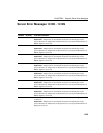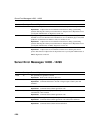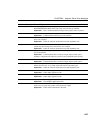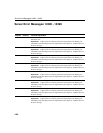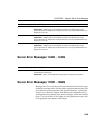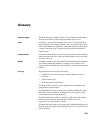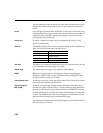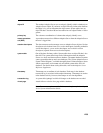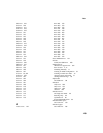
1233
object ID
The number Adaptive Server uses to uniquely identify (within a database) an
Adaptive Server object. If you know an object ID and you know the database
the object is in, you can determine the object name. System tables have an
object ID that is less than 100 and user tables have an object ID that is 100 or
greater.
primary key
The column or combination of columns that uniquely identify a row.
remote procedure
call (RPC)
A procedure executed on a different Adaptive Server from the Adaptive Server
the user is logged into.
session descriptors
The data structures used to manage access to Adaptive Server objects. Session
descriptors exist in three forms: user session descriptors (including worktable
session descriptors), system session descriptors, and worktable session
descriptors (separate from user session descriptors).
system table
One of the data dictionary tables. System tables have an object ID that is less
than 100. The system tables keep track of information about the Adaptive
Server as a whole and about each user database. The
master database contains
some system tables that are not in user databases. The “Sybase Adaptive Server
System Tables Diagram,” available through Sybase Customer Support, shows
which system tables are in
master only and which system tables are in all
databases. For details about each system table, refer to the Adaptive Server
Reference Supplement.
timestamp
Timestamps are an attribute of each database. Each entry in the database
transaction log is associated with a unique timestamp. Timestamps are used to
order database activity; however, timestamps are not time-dependent.
transaction log
A system table (syslogs) in which all changes to the database are recorded.
virtual page
Actual offset on a device for a page within a database.
Note For a more complete set of definitions, see the glossary in the Adaptive
Server System Administration Guide.



